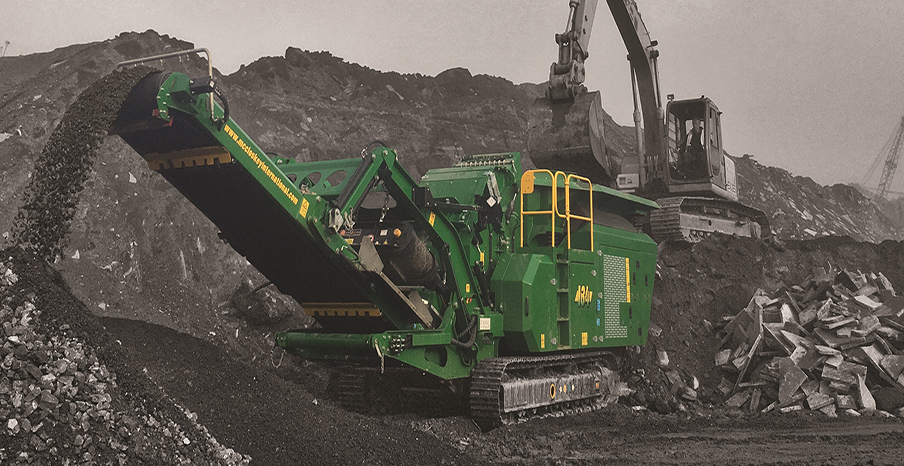Vast Market Potential for Construction and Demolition in South and West China

To support Northern Ireland companies in China, Invest Northern Ireland undertook several research reports to inform and identify high potential opportunities in the region.
This feature is the third in a series focusing on China’s Construction and Demolition (C&D) Waste Recycling sector.
This report aims to identify new areas of growth by analysing and summarising development and demands of the construction and demolition waste recycling industry in South and West China. The geopolitical focus of the report lies in provinces such as Hunan, Shandong, Sichuan, Anhui, and Jiangsu, where demand is rising.
|
Province |
Recycling Rate in 2021 |
2021 |
2020 |
2019 |
2018 |
2017 |
Key Cities |
|---|---|---|---|---|---|---|---|
|
Hunan |
≥40% |
34.66 |
32.62 |
32.30 |
29.33 |
27.02 |
Changsha, Zhuzhou |
|
Shandong |
≤60% |
44.46 |
43.16 |
41.42 |
40.33 |
38.28 |
Jinan, Linyi |
|
Sichuan |
≤50% |
32.80 |
31.85 |
30.56 |
28.71 |
28.85 |
Chengdu, Mianyang |
|
Anhui |
≤40% |
25.83 |
25.07 |
24.06 |
23.15 |
21.89 |
Hefei, Bengbu |
|
Jiangsu |
≥60% |
135.63 |
131.68 |
126.37 |
123.34 |
114.86 |
Suzhou, Yancheng |
Recycling rates in comparison over the years in the 5 provinces.
Market Outlook: Vast Market Potential Driven by Infrastructure Transition and Post-Pandemic Rapid Rebound
The five mentioned provinces and most regions in China remain in the stage of ‘massive consumption, massive emissions, and massive construction’, with no fundamental transformations completed. Increasing resource shortages in China have increased the costs of traditional building materials. As national policies drive the shift from extensive to intensive economic development, and society becomes more environmentally conscientious, construction waste recycling opportunities are multiplying.
In 2020, construction waste recycling in China was expected to be around 7.4-27.8 billion GBP.
In 2020, construction waste recycling in China was expected to be around 7.4-27.8 billion GBP. In 2021, there were 535 projects for construction waste disposal nationwide in China, with a total investment amounting to 1.03 billion GBP. Considering these five provinces share of recycling accounts for a significant portion of the nation, and in 2021, it was estimated that these five provinces would attribute around 48.6 million GBP on construction waste disposal alone.
Due to the COVID-19 pandemic, most provinces and cities in the country experienced work stoppages and city-wide shutdowns. Construction of waste disposal sites and demolition plans were postponed. Significant demand for construction and demolition projects and recycling sites is expected soon as the pandemic continues to ease in 2023 and the 14th Five-Year-Plan (2021-2025) begins to progress, which includes planning the necessary amount of C&D recycling sites.
Market Development: Remaining Uncertainty and Identifying New Avenues for Growth
While the construction and demolition waste recycling industry have positive prospects due to the easing of pandemic restrictions and the developmental requirements of national policies, there is still some uncertainty regarding the future of the industry, and the opportunities available.
Despite the market’s continued promise for the foreseeable, China’s production of construction waste is predicted to slow down towards the end of the fourteenth Five-Year Plan due to various cities’ urbanisation. As a result, the focus of disposal will change to include demolition and renovation waste generated from urban rejuvenation and decoration.
Due to various cities’ urbanisation, the focus of disposal will change to include demolition and renovation waste generated from rejuvenation and decoration.
To address issues including constrained workspace, project timelines, and stringent environmental requirements, the Chinese government is presently encouraging garbage recycling at the source. Therefore, it is anticipated that there would be an increase in demand for mobile disposal machinery in central urban areas, primarily driven by government-supported or government-initiated projects.
The pandemic, however, had a negative impact on economic development overall, causing financial hardships and a downturn in the construction industry. Consequently, project delays will arise from this impact in the market for the industry.
In conclusion, it is advised that Northern Ireland equipment businesses focus on infrastructure projects in different provinces and cities, as these are key contributors to local economic development drivers. Additionally, it is advised to focus on identifying new opportunities for market growth in China by providing solutions for various scenarios, such as construction waste consisting of muck, mud, concrete blocks, and stones, and by proposing comprehensive solutions, adaptable sales models, or rental businesses.
Market-Entry Strategy: Political Consistency yet Geographic Difference in the China Market
Through this report, it has been observed that the five provinces have shown a generally consistent approach in terms of supportive policies. However, it is important to note that these provinces differ significantly from one another due to things like location, population, and local economy. These differences help each province’s construction industry flourish along a variety of new, prospective development trajectories. Additionally, market priority should be strategically set up based on the varying demands of construction waste among them.
Considering this, a tailored market entry strategy based on the specific market characteristics of each province is essential for Northern Ireland businesses.
For a comprehensive analysis of each province, including detailed information on competitors and project situations, and more information on this Report, contact your Client Executive or our AME Sector Lead in China.




Comments